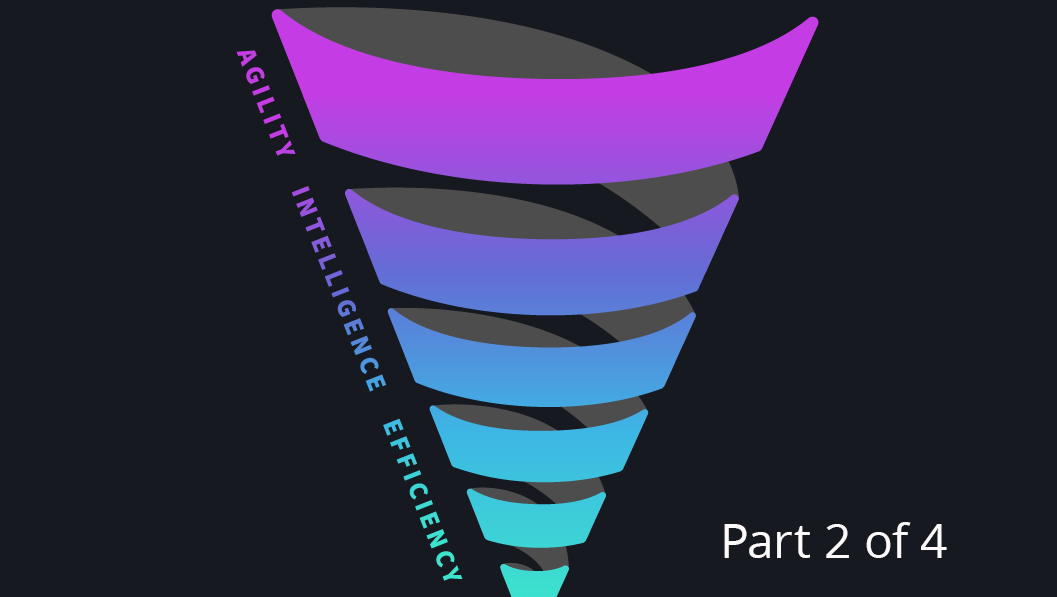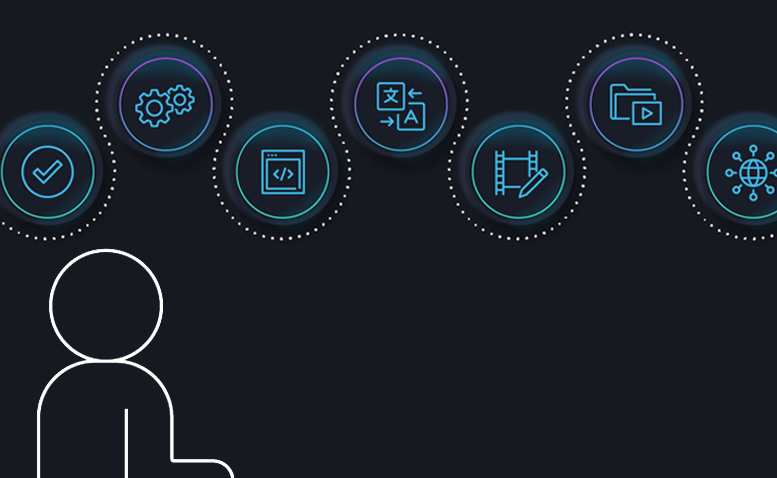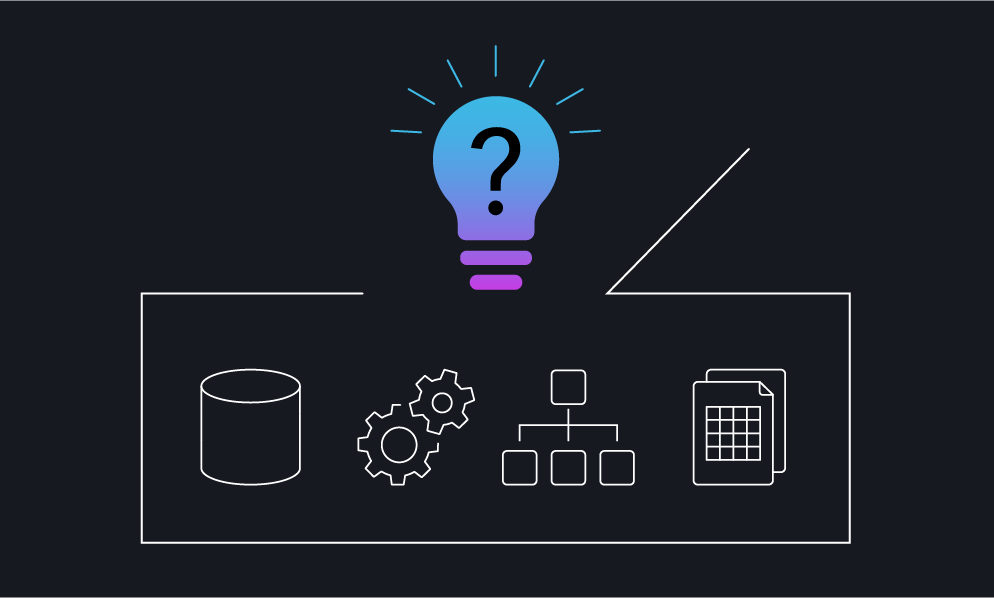Re-engineer Your Supply Chain and
Begin Building a Competitive Edge
If you read my earlier post, “The Essence of Supply Chain Optimization,” then you know that gaining efficiency is a key result of media supply chain optimization. Removing waste from your supply chain is a clear way to make your operations more efficient.
When your organization begins the optimization process and initiates its shift to cloud-based media supply chain management with a platform such as SDVI Rally, efficiency is a natural and immediate result. Of the three pillars of media supply chain optimization — Efficiency, Intelligence, Agility — efficiency is the pillar that will become most evident, most quickly, as you start this journey.
Then, over time, as you analyze, orchestrate, and optimize each of the multiple processes across your supply chain and then link them together, you get a value result far beyond cumulative efficiencies and cost reductions. You will have the opportunity to reimagine the way your supply chain operates and to cast off the complexity and constraints of traditional on-prem operations.
But where do you start? How do you begin to find efficiencies in your supply chain? Start with two foundational phases — simplifying tasks and eliminating duplication, both critical to finding efficiencies. In taking on these phases, you’ll begin to reimagine and redefine your supply chain.
Task Simplification
As you reassess and reenvision your media supply chain in the cloud, you can break that supply chain down into smaller component parts, identify the specific tasks that need to be performed, and apply just the right tool to each task. That’s task simplification.
How does this approach improve on the “lift and shift” model? Well, consider the applications typically used today to perform essential media processing tasks. These applications can do all kinds of things. Maybe you buy a transcoder to re-encode media from one profile to another, but you also get functions such as audio processing, frame rate conversion, standards conversion, and so on. You pay for all of this functionality but use only a small fraction of it.
Task simplification allows you to identify very distinct discrete tasks and apply an application or microservice to tackle that single task. Rather than use the best tool that you have, you can apply the best tool for that job, and this translates to higher utilization and better cost alignment.
Going forward with this approach, you can use intelligence to automate the application of different tools to a specific task type. Your media supply chain platform can choose from tool A, B, or C, depending on content value, processing cost, and other factors related to time, quality, and cost.
A further benefit of task simplification is that it becomes much easier to observe the performance of your supply chain. In a conventional scenario in which a tool does seven things, it can be difficult to track down the source of an alert or error. But if you have a tool that does one very specific thing, you immediately know what failed and where you need to send content to keep your supply chain running smoothly.
Elimination of Duplicate Work
As you take on task simplification, you’ll naturally start to find areas of duplication. And not just duplicate work, as it turns out. You’ll likely see duplicate copies of media, duplicate systems, and duplicate vendors providing similar services. Duplication that has simply built up over time.
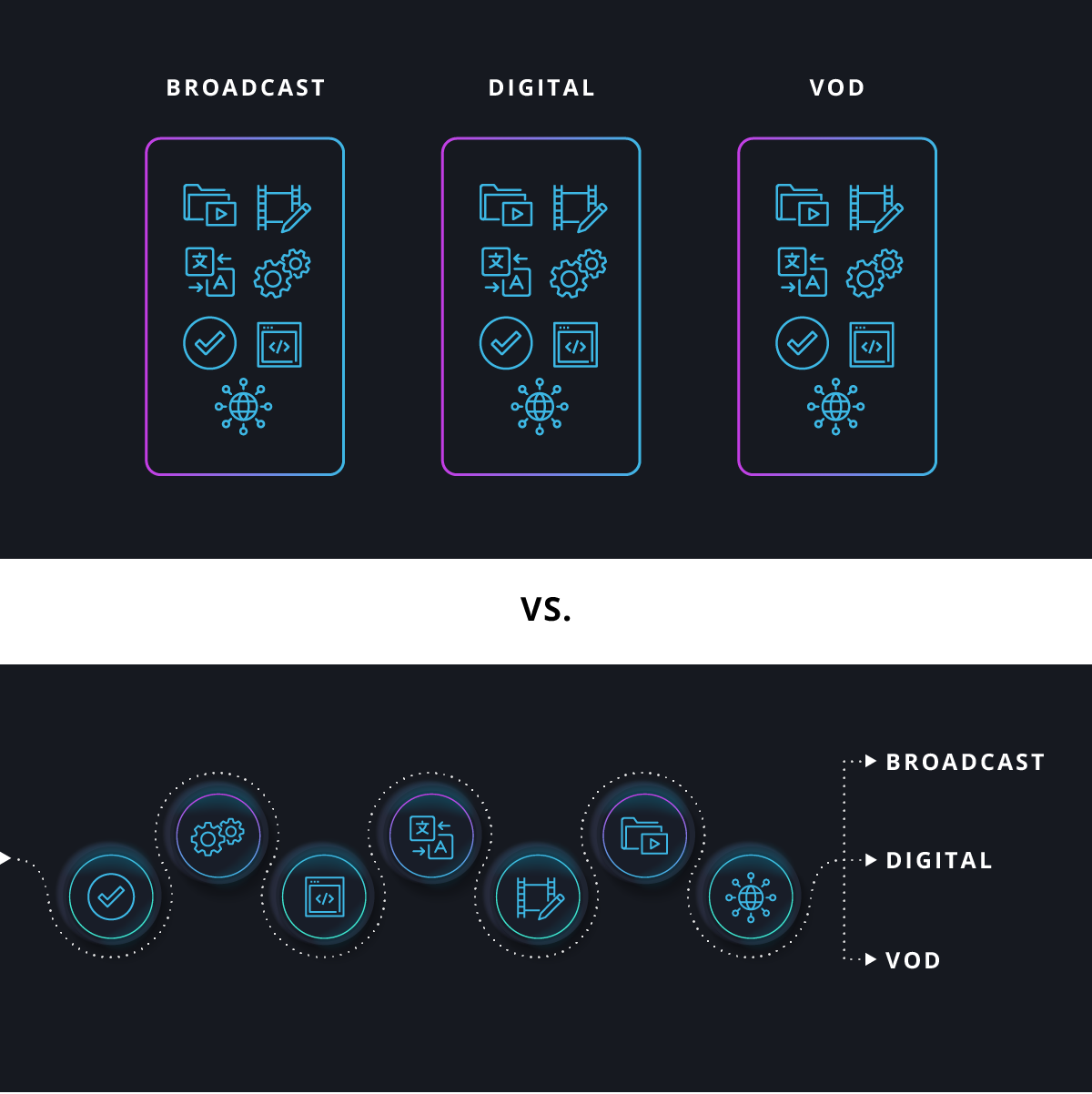 You’ll uncover duplication within different departments of your organization. Say, for example, your media organization has a broadcast department and a digital department and maybe also a VOD department. When you step back and start to think of these departments as part of a single supply chain, rather than multiple individual components, it becomes clear that tasks such as QC, compliance, transcoding, and delivery are often repeated unnecessarily across the organization. When you transform operations into a single production line with branches serving different departments, your organization can eliminate duplicate work, recapture both time and money, and focus those resources elsewhere.
You’ll uncover duplication within different departments of your organization. Say, for example, your media organization has a broadcast department and a digital department and maybe also a VOD department. When you step back and start to think of these departments as part of a single supply chain, rather than multiple individual components, it becomes clear that tasks such as QC, compliance, transcoding, and delivery are often repeated unnecessarily across the organization. When you transform operations into a single production line with branches serving different departments, your organization can eliminate duplicate work, recapture both time and money, and focus those resources elsewhere.
How do you begin identifying duplication? If you’re a Rally user, you can take advantage of SDVI’s expertise and advice, as well as the inherent capabilities of the Rally supply chain platform. Rally is designed to collect data around your tasks and processes, and the platform allows you to analyze that data and highlight areas where duplicate work might be eliminated. Visualization tools tell you how much time (and money) is being spent on different steps of the supply chain. From there you can identify those duplicate elements that are the most costly or the most onerous, and move forward in collapsing them into one.
Eliminating duplication is part of the iterative improvement process essential to building and optimizing supply chains. Even if you already have a massive on-prem infrastructure, supply chain optimization allows you to take a fresh look at how you work. You can start without existing constraints and explore new options as you migrate to the cloud.
Most organizations take on this challenge use case by use case. Sometimes it’s the use case that most obviously needs work, and at other times it’s the use case that makes for the easiest starting point. Move from one use case to the next, and you’re doing the important work of redesigning and re-architecting your supply chain to realize much greater efficiency, productivity, and opportunity.
Summary
Task simplification and elimination of duplicate work may seem elemental, but they are two vital phases of the continuous improvement cycle that comes with building and optimizing supply chains. If you move forward into the cloud without doing this work, you will miss a critical chance to take productivity and efficiency to the next level. You risk falling behind.
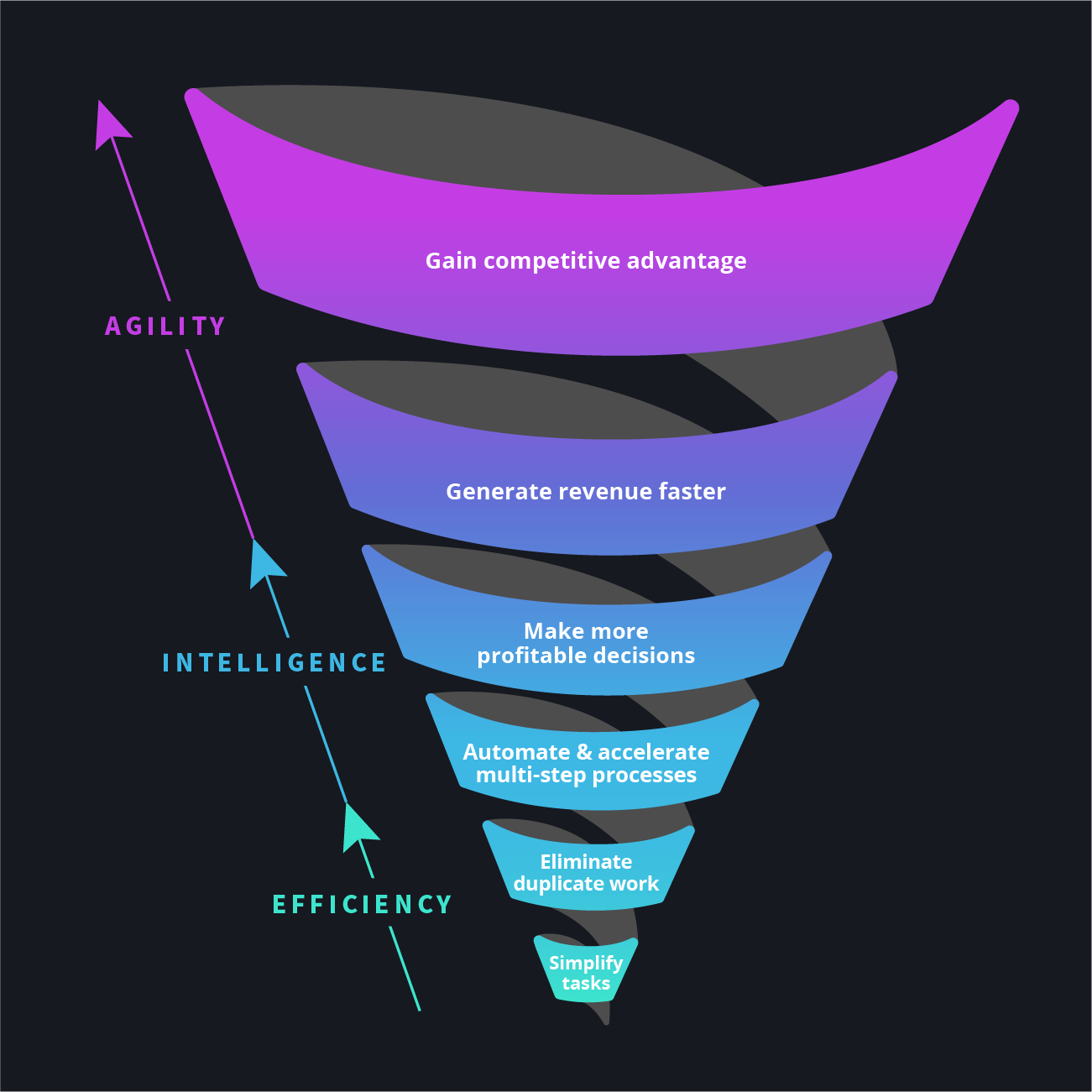 Taking on a redesign and re-architecting of your supply chain will take more work than a “lift and shift,” but it’s work that will pay off for you over and over again, and in bigger ways over time. Whether you start with a use case that’s your highest priority or with the easiest first step, your path toward cloud-based media supply chains will deliver meaningful results that can give your business a competitive edge.
Taking on a redesign and re-architecting of your supply chain will take more work than a “lift and shift,” but it’s work that will pay off for you over and over again, and in bigger ways over time. Whether you start with a use case that’s your highest priority or with the easiest first step, your path toward cloud-based media supply chains will deliver meaningful results that can give your business a competitive edge.
Building on the efficiency gains from modernizing your media supply chain, our next blog will focus on how optimization both creates, and benefits from, Intelligence. Once you clean things up by simplifying tasks and eliminating duplication, you’re ready to automate and accelerate multistep processes to make that supply chain hum! You’ll also find you’re positioned to make more profitable decisions too.
Read the next post in this series, “Accelerate Optimization Using Supply Chain Intelligence“
